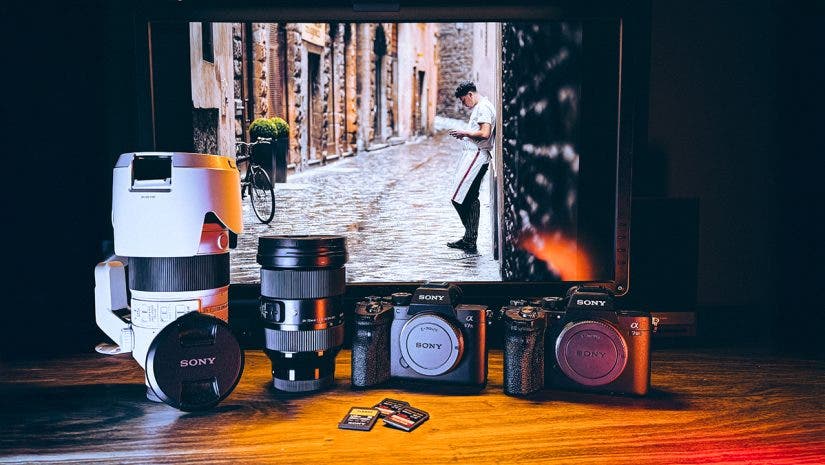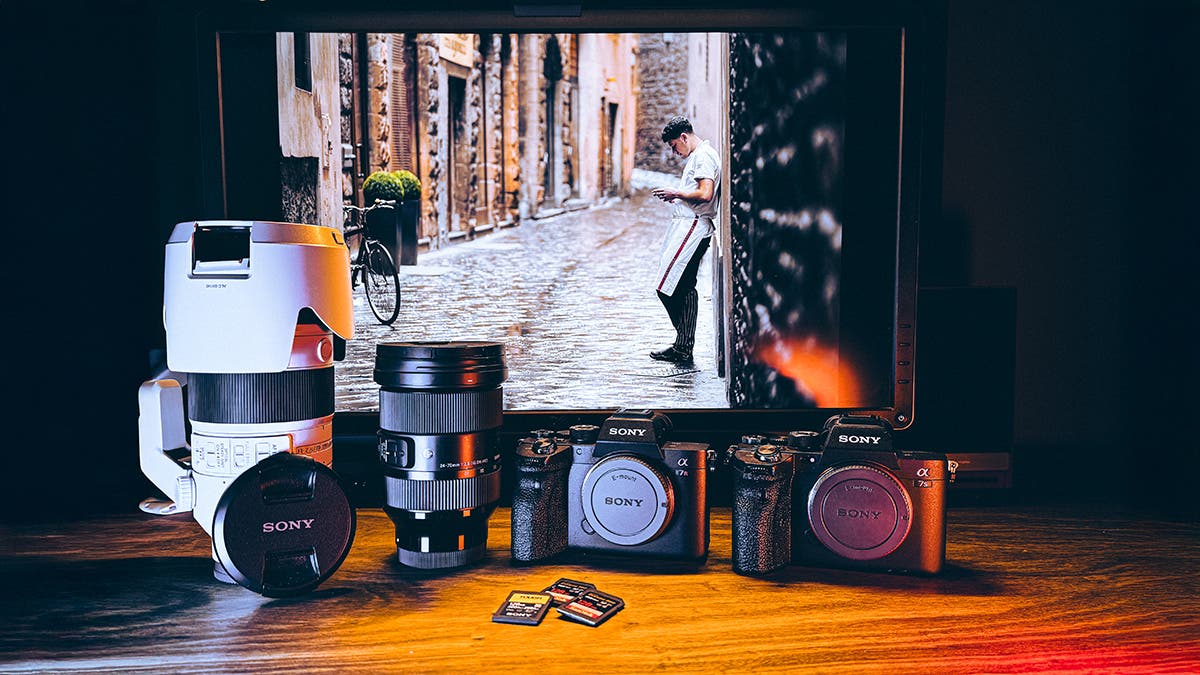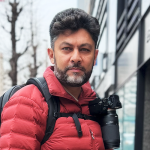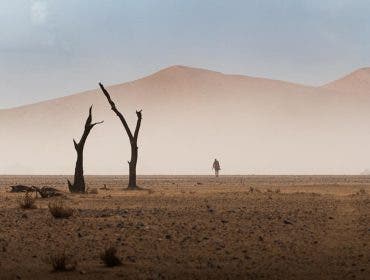Gear for street photography, how much does it matter? Let me begin with a story. On a rainy day in Florence under a gloomy sky, I strolled near the Cathedral of Santa Maria del Fiore. My attention was caught by a young couple taking pictures and laughing. They looked like lost tourists checking their phones, but to me, the scene seemed romantic: two umbrellas, glistening wet cobblestones, two heads leaning forward, oblivious to their surroundings. I paused to zoom to 200mm with my Sony FE 70-200mm f/2.8 GM OSS II G Lens, capturing a burst of photos at f/2.8. Fortuitously, the background had no other figures, allowing the viewer’s eye to focus on the couple while still appreciating the rainy ambiance.

This Vignette Highlights a Few Technical Aspects About my Gear for Street Photography:
- A telephoto lens was used to focus on the subject rather than walking closer, which risked making them aware of the camera’s presence and losing the moment.
- Low light and a long focal length of 200mm necessitated a fast shutter speed for a sharp image. ISO 800 achieved a shutter speed of 1/400 sec in aperture priority mode. Although ISO 800 produces grainy images, this is acceptable and may be preferred by some for a film look and feel.
- Camera shake often creates a blurry image with the depression and release of the shutter button when shooting handheld. I took a burst of shots to prevent this, and the photos captured between pressing and releasing were sharp.
- The composition was chosen on the camera’s LCD screen, which, among other settings, permits touch focus instead of moving the focus points with a joystick. The camera also had face detection, allowing me to focus on composition.
- Finally, the camera and lens are water-resistant, and a lens hood prevents raindrops from falling onto the glass.
In street photography, photographers’ choices of camera bodies, lenses, and accessories vary, reflecting their unique preferences, knowledge, and experiences in the field. The following sections offer general guidelines that I find helpful:
Gear for Street Photography: The Camera Body
I carry two camera bodies for street photography: one with a telephoto lens and the other with a mid-range lens. This strategy, though costly, saves time as I don’t need to change lenses. Consequently, it allows me to capture moments across a focal range of 24mm to 200mm.
Look for the following when choosing cameras:
Megapixels
A higher megapixel count allows for the option of a larger print size. However, this increase in image resolution comes with the downside of larger files, which can potentially lead to storage and backup challenges.
Performance at High ISO
When evaluating a camera, it is essential to consider more than just the megapixel count. A camera’s performance in low light conditions, particularly at high ISO settings, significantly affects its overall image quality. The higher the ISO, the more grainy the image becomes, resulting in reduced sharpness and clarity. Although high ISO noise can usually be addressed through post-processing techniques, it is better to know beyond what ISO you should not shoot for your specific camera model. It’s also worth noting that increasing megapixels could impact high ISO performance, so it’s advisable to consult reviews to make well-informed decisions.
Focus
The camera and lens play crucial roles in determining focus. More focus points are preferable; however, the camera’s effectiveness in detecting faces and eyes is equally important. Additionally, the touch focus feature can be quite beneficial, allowing users to adjust the focus settings manually to achieve the desired results.
Burst Mode and Write Speed
The cameras should be capable of capturing burst photos while effectively managing the writing process to memory cards. This emphasizes the significance of investing in reliable, high-speed memory cards, which can enhance the overall photography experience by ensuring that images are stored without delay.
Custom Buttons and Menu Navigation
Cameras equipped with advanced configuration options on the LCD’s home screen can significantly reduce the time it takes to capture moments. The inclusion of custom buttons and dials on camera bodies for pre-set settings has transitioned from being a desirable feature to a necessity.
Durability and Reliability
When evaluating a camera, consider its grip, overall feel, and weather-sealing features. These aspects play a significant role in ensuring the camera’s durability and performance in various environmental conditions.

My Personal Choices
I primarily use a Sony a7III for street and landscape photography, but I plan to upgrade to the Sony a7IV. The a7III has 24.2 megapixels, while the a7IV offers 33 megapixels. These bodies have time-proven reliability and efficiency for both photo and video. My second workhorse is a Sony A7sIII, which only has 12 megapixels but performs well in low light for video and nighttime photography. I rely on high-speed SanDisk Extreme Pro 300 MB/s v90 II SD cards for reliable performance.
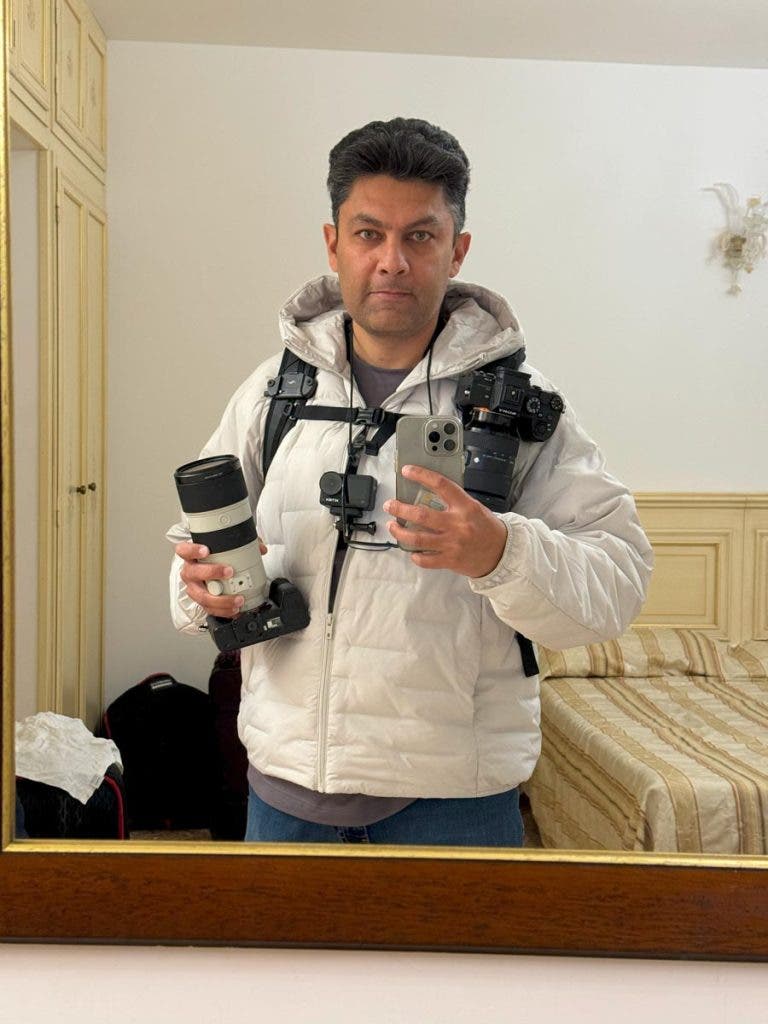
Gear for Street Photography: Lenses
Composition in street photography is a very subjective choice. Do you want to take portraits only and get close to your subject? Or do you want to stay far away and be non-intrusive? This intention impacts the choice of lenses and also forces photographers to choose between prime and zoom lenses. The speed, sharpness, and bokeh of a prime lens are to the photographer like honey to a bear.
Your creative preferences influence your choice of lenses. For instance, a Sony FE 50mm f/1.4 GM Lens demands thoughtful composition. In contrast, a Sony FE 24-70mm f/2.8 GM II Lens on the same camera provides versatility, allowing you to zoom in or out without moving much.
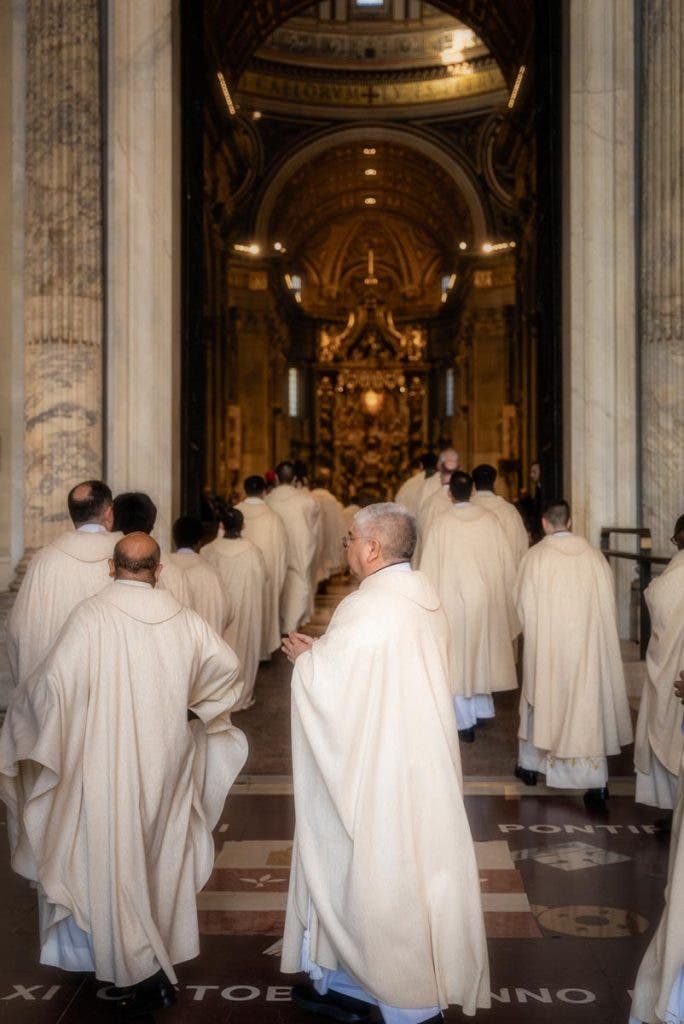
Start with one lens, practice, and then buy more based on the limitations you encounter or your evolving taste. I began with a Sony FE 50mm f/1.8 Lens, got a Sony FE 70-200mm f/2.8 GM OSS II G, and now also use a Sony FE 24-70mm f/2.8 GM II Lens. For a recent international trip, I opted for zoom lenses for a versatile focal range during street photography. I might have considered a prime lens if I had a model shoot to direct in a street setting, where I would have had more time and liberty to compose my images.
Accessories and Other Gear
The following are a few accessories that should be part of your arsenal:
- Microfibre cloths
- An air blower
- Clips, such as Peak Design Capture Clips – used to hang cameras on your chest
- Lens hoods prevent lens flare and protect your glass from elements like rain and dust
- A waterproof bag or a poncho
Carrying spare batteries and memory cards are not optional accessories but necessities. Always ensure you have the essential tech to support your adventures, especially while traveling.
When it All Comes Together
Here’s an overview of the process I followed to capture an artisan from Venice, Italy. The photo was taken with a mid-range lens at a high ISO through a glass window in landscape orientation to showcase the working environment. While editing, I muted all colors except red and orange, increased the contrast and clarity for a more rugged appearance, retained noise for a grainy effect, and selectively brightened the artisan’s body and face.
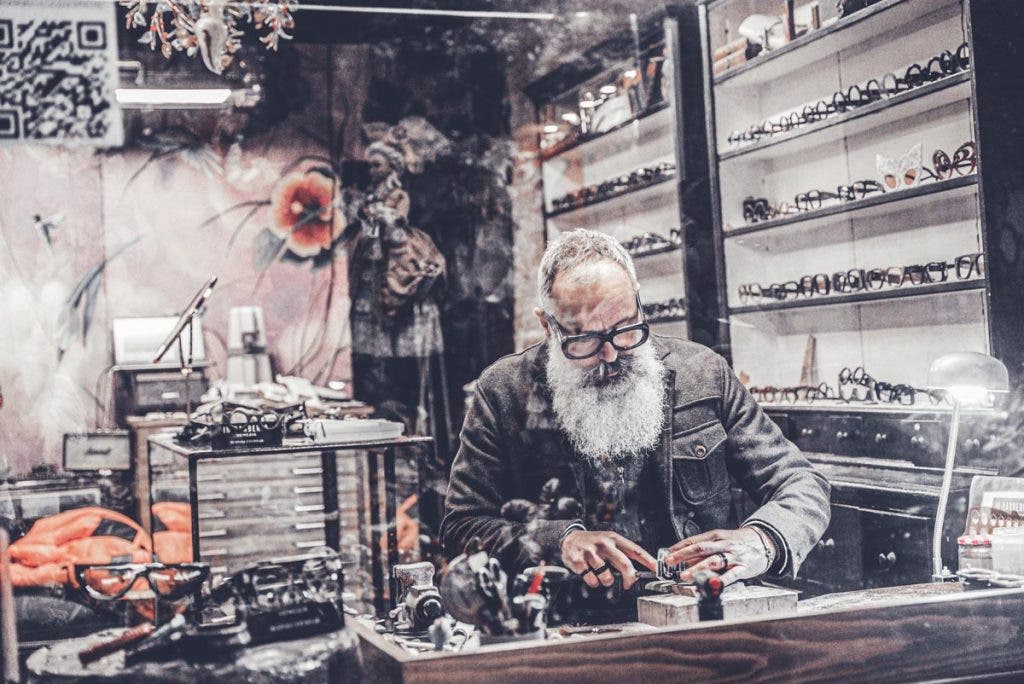
Conclusion
Focus on blending technical skills with personal expression. Your selection of camera bodies, lenses, and accessories is vital for capturing fleeting moments with clarity and creativity. Whether you employ a telephoto lens to photograph distant scenes or a prime lens for meticulously curated compositions, every choice you make will shape the narrative of your photographs.
Take the time to master your equipment – it will enable you to efficiently focus on composition and on being present in the moment, which is the essence of street photography.
All photos by Muji.
